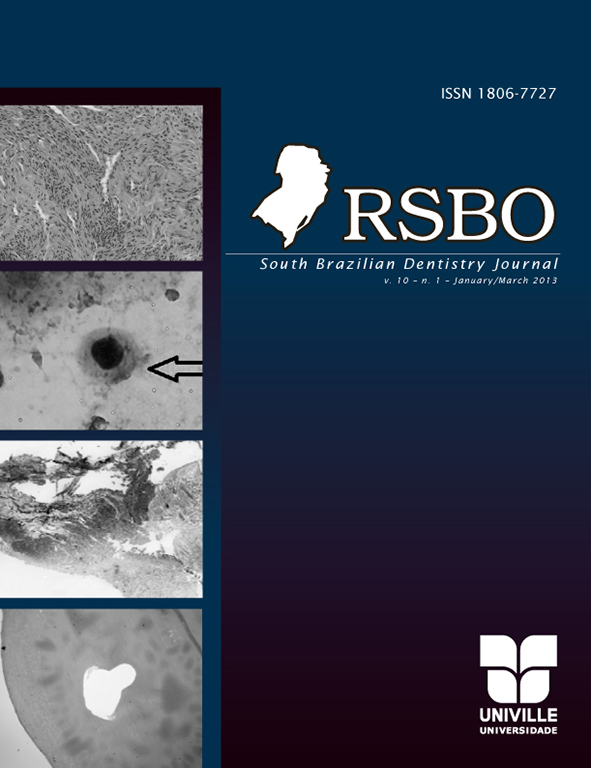Evaluation of the inflammatory response of the subcutaneous conjunctive of mice against some endodontic irrigations solutions
DOI:
https://doi.org/10.21726/rsbo.v10i1.897Palavras-chave:
inflammation; sodium hypochlorite.Resumo
Sodium hypochlorite has been used as an endodontic
irrigant since 1936, when Walker used it as Sodium Chlorine. Since
then it has became the most well acceptable endodontic irrigant.
During the last few years many studies have reported the importance
of pH control. Objective: This study evaluates the inflammatory
response of some endodontic irrigations solutions in the subcutaneous
connective tissue of mice. Material and methods: Thirty-six mice
were obtained from the Biomedical Sciences Institute at the University
of São Paulo. Their backs were divided into four quadrants and
each quadrant was injured with an 8 mm punch. Three of these
wounds were submitted to differents solutions, while the fourth was
used as a control. This experiment was done in triplicate. After the
irrigation of the wounds, the mice were sacrificed at 3, 7 and 14
days. The samples were fixed on 10% formalin and histologically
analyzed after hematoxylin and eosin staining. Results: At 14 days
all wounds were covered with epithelium with a mild inflammatory infiltrate in the subjacent connective tissue, except for the group
that employed 5% sodium hypochlorite at pH 11. Conclusion: The
greatest the pH and concentration of sodium hypochlorite solutions,
the most toxic they are.

